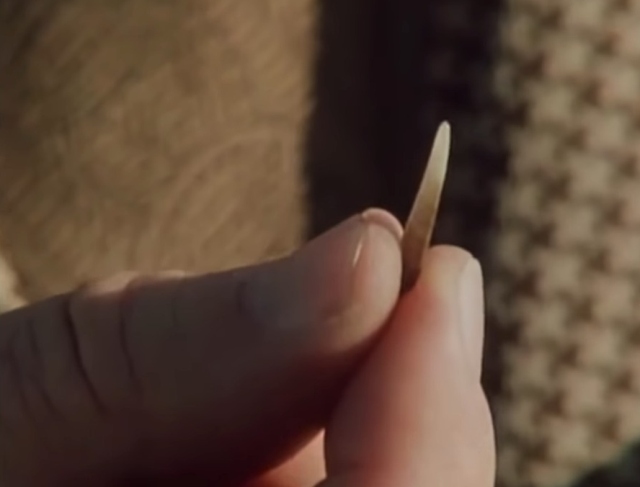
The destroyer USS Stein, a Knox-class escort destroyer, was commissioned on January 8, 1972, as part of the US 7th Fleet. In 1978, USS Stein was on a mission in the Pacific, somewhere between Acapulco and Ecuador, when something very strange happened to it.
 The Massive Attack On USS Stein In 1978
The Massive Attack On USS Stein In 1978
According to the main report, at some point the ship’s main anti-submarine sensor, AN/SQS-26CX large bow-mounted low-frequency scanning sonar, suddenly failed, having recorded a very loud noise before that.
At that time, no one could understand what was happening, because the equipment was checked at the dock, before going out to the ocean, and it was in perfect working order. At the same time, everyone understood that their ship was in the middle of the ocean and it was unlikely that they had collided with some other ship.
The failure was severe enough that the destroyer was forced to return to the dry dock in California to investigate and begin any repairs. And this is where it all got weird.
It didn’t take long back to the dock to figure out why the sonar had stopped working. It turned out that a very massive radar dome, located just below the waterline, was badly damaged.
More than 8% of the dome’s surface was found to have large tears in the rubber covering as if it had been torn apart by something numerous and sharp. Some pieces were so badly torn off that they hung in pieces, and the largest hole was 4 feet (120 cm) in diameter.
It seemed that something very large and powerful attacked the dome and tore it to shreds, and this was confirmed by the presence of several broken-off curved hooks or claws that sank deep into the rubber.
As repairs progressed, these claws or pincers, whatever they were, were sent for analysis and study, including those examined by naval biologist F.G. Wood, who concluded that they were probably squid tentacle hooks. And a giant squid.

According to him, these hook-claws were so large that they were unknown to science. According to Wood, the length of a squid with such hooks would reach about 46 meters. That is, it would be the absolute giant of the underwater world of all known to science.
For comparison, the largest known squids belong to the genus Architeuthis and Mesonychoteuthis, the former reach a maximum length of about 8 meters, the latter 10-14 meters in length with tentacles.
If we take it for granted that an incredibly large squid attacked an American ship, then the recognition of this species could be the main scientific sensation of the century.
Particularly curious is the fact that giant squid of the genus Mesonychoteuthis live in the Antarctic Ocean, which is quite far from where the USS Stein was located. At the same time, such giants live at great depths, and usually get to the surface in very rare cases when they are sick or injured.
And this supposedly injured or sick squid, for some reason, found the strength to aggressively attack a large ship, damaging its durable equipment.
The story of the USS Stein was widely publicized in cryptozoology and has since been seen as proof of the existence of some previously undiscovered species of very massive squid lurking in the deep parts of the world.
However, there were many more skeptics.
One problem with this incident was that there is very little official documentation of this incident. The report originally appeared in the journal of the US Naval Institute, but there were few details about exactly where the ship was located or what actually happened, and not even an exact date.
 A claw shown by Wood as being found in a hole in a damaged rubber cover
A claw shown by Wood as being found in a hole in a damaged rubber cover
The story then appeared in the television miniseries The Secret World of Arthur S. Clarke and in the pages of its companion book, which contains more details but no source for these additional details.
Particular skepticism was caused by the photos presented in the book, which show, presumably, the same rubber coating of the locator with damaged holes, and even the hooks themselves. But the holes and clawshooks shown in the pictures can hardly be called particularly large.
Paleontologist Tyler Greenfield commented on this case:
“All three sources agree on the nature of the event. The perpetrator of the attack left numerous “claws” stuck in the slits. Navy marine biologist F. G. Wood identified them as squid hooks, and Scott Johnson, a Navy biophysicist, claimed that it was” extremely large species, hitherto unknown to science.”
This claim is highly questionable, as the photo of Wood holding a piece of claw shows that the piece is no longer than his own fingernail. The average length of an adult male nail is only 1.47 centimeters. Nevertheless, with the modest size of such claws, for some reason, there is a calculation for the very large size of the squid.
The insulating rubber covering of the sonar dome, which was attached to the forward part of the bow below the waterline, was torn. Cuts covered about 8% of its surface. Petty Officer Ira Carpenter claimed that the longest of them was “about 4 feet (120 cm) long.”
However, the photo and video of the damaged rubber section show that the longest cuts are only about 2 inches (5 cm) long. Either Carpenter greatly exaggerated their size, or the much larger ones were not located on the site.
In my opinion, the attacker on the destroyer was most likely a squid from the Onychoteuthidae family. They are characterized by two rows of large hooks on each of the tentacles. It is also possible that it was the squid Onychoteuthis horstkottei, which lives in the equatorial eastern Pacific Ocean, or a closely related species. They have the longest claw 0.38 cm.
Using these proportions and the estimated length of the claw that Wood held in his hand, it turns out that the length of the mantle (torso) of the squid that “attacked” USS Stein is only 29 cm. Although this is a very preliminary estimate, it suggests that the hooks probably belonged to rather small squid.”
But could such a small squid cause such damage to the sonar? Very doubtful. Here you rather believe that the photos in the book are not the same.








